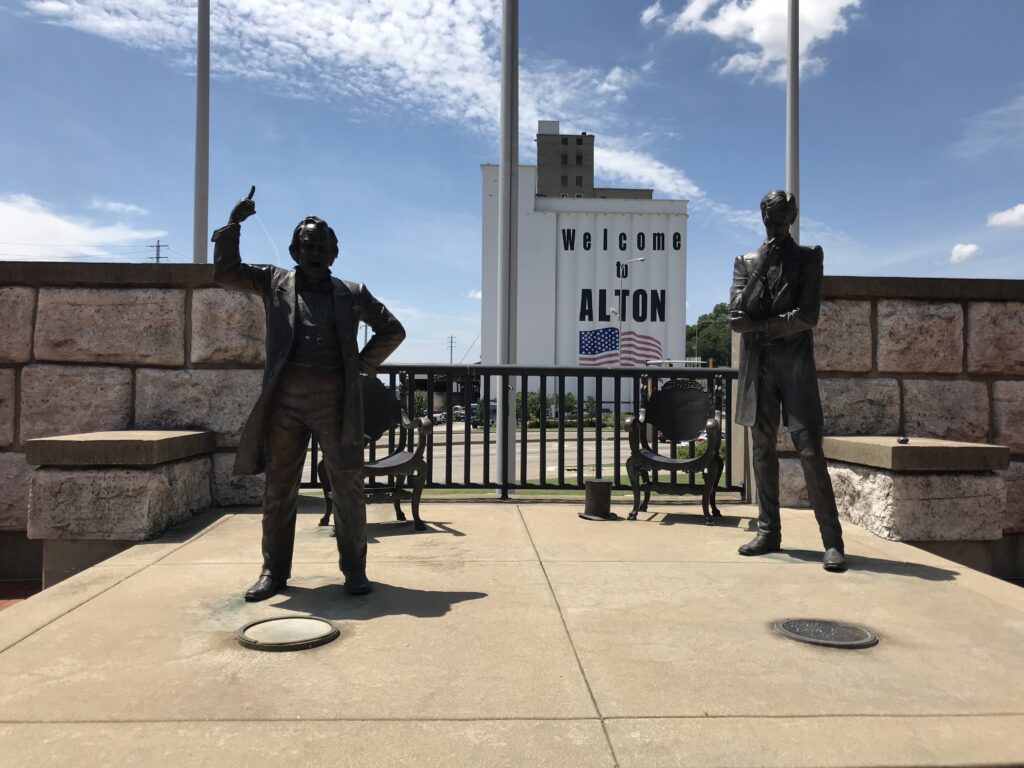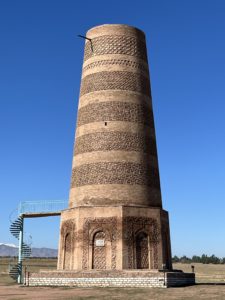 One of the stops on my region tour of several Silk Road (aka, “Stan”) countries was the Burana Tower in the Chuy Valley outside of Bishkek, the capital city of Kyrgyzstan. Less than a two-hour drive from the center of town, with a grand view of the Tien Shan Mountains overlooking the plains, the tower is all that remains of the ancient city of Balasagun, established in the 9th century. The tower is actually a minaret from an ancient mosque.
One of the stops on my region tour of several Silk Road (aka, “Stan”) countries was the Burana Tower in the Chuy Valley outside of Bishkek, the capital city of Kyrgyzstan. Less than a two-hour drive from the center of town, with a grand view of the Tien Shan Mountains overlooking the plains, the tower is all that remains of the ancient city of Balasagun, established in the 9th century. The tower is actually a minaret from an ancient mosque.
Or more accurately, part of a minaret. Originally around 150 feet tall, a 15th century earthquake toppled the top half, leaving the current structure at just over 80 feet. Since the remains reflect the wider bottom portion without the visually thinner top portion of most minarets, Burana Tower has a stumpy look to it. Restoration in the 1970s secured the centuries of decay, and now visitors can climb an external metal spiral staircase up to the entrance to an internal winding, dark stairway (not for claustrophobes) up to a view platform on the top. A closer look at the outside shows the intricacies of the design.
The Tower stands alone but is not the only artifact worth the trip out to the site. There are explanatory signs detailing the history of Balasagun leading to a small museum full of remnants from the ancient city. The museum also has a photograph of a model recreating the ancient city. Behind it is a graveyard where you can see the varied gravestones (many are literally carved stones) of centuries of former inhabitants. The seemingly amorphous mound behind the tower is easy to climb and doing so reveals the remnants of the ancient castle. Entering a large yurt gives a sense of how the founding Karakhanids lived. Overall, it’s an amazing site and well worth the visit.
If you haven’t already, check out previous posts about the controversial cotton and silk industries of Uzbekistan and the incredible light show in Samarkand.
[Photo Credits: all by David J. Kent, 2023]

Lincoln: The Fire of Genius: How Abraham Lincoln’s Commitment to Science and Technology Helped Modernize America is available at booksellers nationwide.
Limited signed copies are available via this website. The book also listed on Goodreads, the database where I keep track of my reading. Click on the “Want to Read” button to put it on your reading list. Please leave a review on Goodreads and Amazon if you like the book.
You also follow my author page on Facebook.
David J. Kent is President of the Lincoln Group of DC and the author of Lincoln: The Fire of Genius: How Abraham Lincoln’s Commitment to Science and Technology Helped Modernize America and Lincoln: The Man Who Saved America.
His previous books include Tesla: The Wizard of Electricity and Edison: The Inventor of the Modern World and two specialty e-books: Nikola Tesla: Renewable Energy Ahead of Its Time and Abraham Lincoln and Nikola Tesla: Connected by Fate.






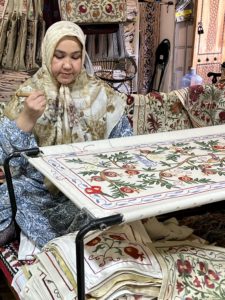 It took two or three days into my visit to Uzbekistan for the subject of the controversial cotton growing industry to come up. We also discussed the silk industry that made the country a key stop in the old Silk Road. Uzbekistan is the largest electricity producer in Central Asia, mainly due to the abundant natural gas reserves and huge Soviet-era power-generation plants. They also are the seventh largest global producer of gold, with copper and uranium not far behind. At first glance (and even second glance), Uzbekistan seems too arid to grow cotton. But cotton production is actually one of most important contributors to the Uzbek economy, accounting for about a fifth of its exports.
It took two or three days into my visit to Uzbekistan for the subject of the controversial cotton growing industry to come up. We also discussed the silk industry that made the country a key stop in the old Silk Road. Uzbekistan is the largest electricity producer in Central Asia, mainly due to the abundant natural gas reserves and huge Soviet-era power-generation plants. They also are the seventh largest global producer of gold, with copper and uranium not far behind. At first glance (and even second glance), Uzbekistan seems too arid to grow cotton. But cotton production is actually one of most important contributors to the Uzbek economy, accounting for about a fifth of its exports.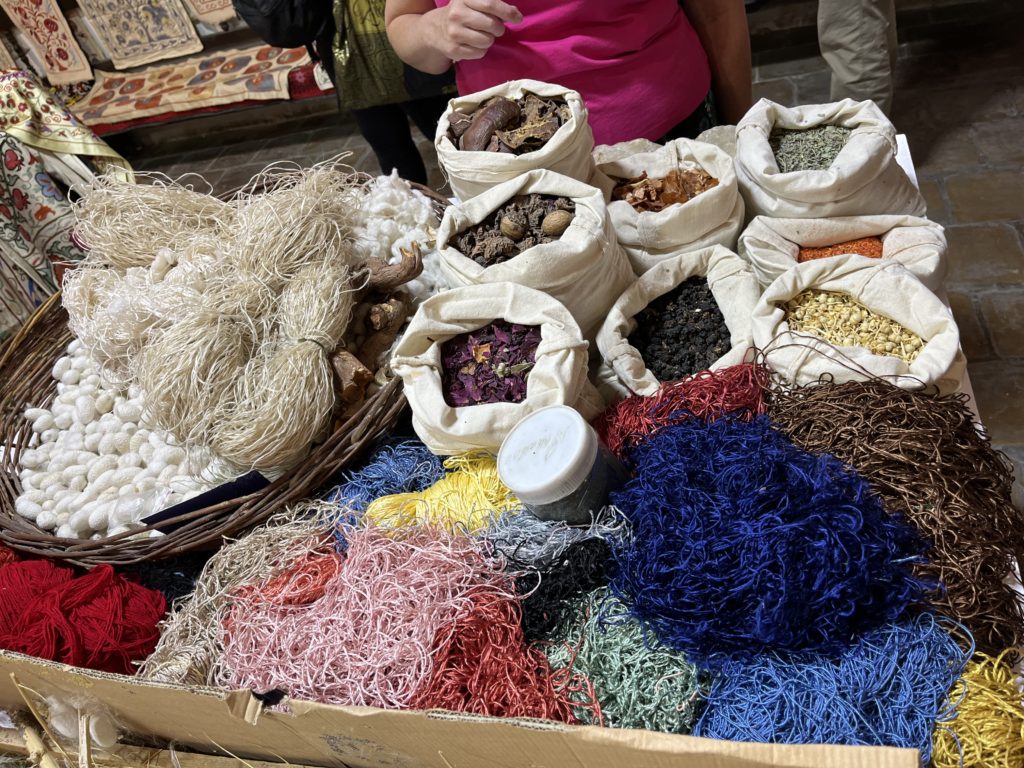
 Samarkand was one of the stops on my recent travels to Uzbekistan, Tajikistan, Kyrgyzstan, and Kazakhstan. [
Samarkand was one of the stops on my recent travels to Uzbekistan, Tajikistan, Kyrgyzstan, and Kazakhstan. [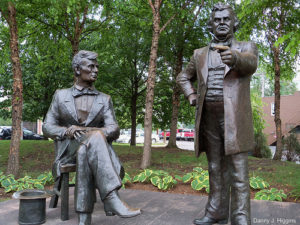 Abraham Lincoln lost his 1856 Senate campaign, but in 1858 he had another opportunity to run for Senate, this time against his old rival Stephen A. Douglas. In June Lincoln gave what is perhaps one of his most cited oratories, the “House Divided” speech. Once again he warned that the Kansas-Nebraska Act had opened the country to expansion of slavery—not just in the territories, but throughout the nation. Beginning with a paraphrased line from the Bible (Mark 3:25), Lincoln notes:
Abraham Lincoln lost his 1856 Senate campaign, but in 1858 he had another opportunity to run for Senate, this time against his old rival Stephen A. Douglas. In June Lincoln gave what is perhaps one of his most cited oratories, the “House Divided” speech. Once again he warned that the Kansas-Nebraska Act had opened the country to expansion of slavery—not just in the territories, but throughout the nation. Beginning with a paraphrased line from the Bible (Mark 3:25), Lincoln notes: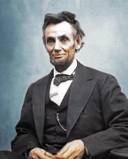 The recent pressure to remove Confederate statues has spilled over into monuments to other historical figures, most incredibly including
The recent pressure to remove Confederate statues has spilled over into monuments to other historical figures, most incredibly including 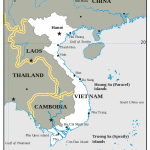 In my last post I reminisced about my first real traveling experience out of the USA – to
In my last post I reminisced about my first real traveling experience out of the USA – to 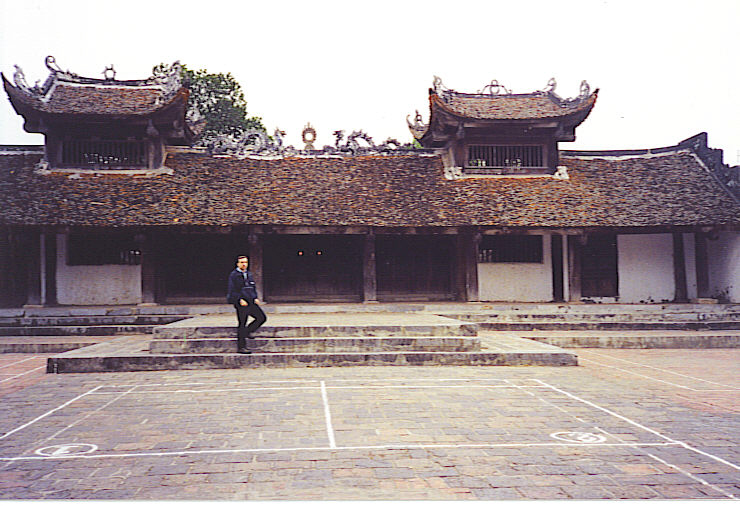
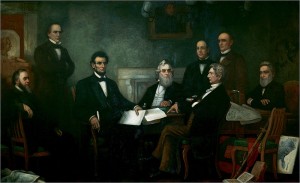 No doubt everyone in the Lincoln world has heard repeatedly about the document we’ve all come to know as the “blind memorandum.” But what about the “reveal party” when Lincoln showed his cabinet what he had written? That event happened on November 11, 1864.
No doubt everyone in the Lincoln world has heard repeatedly about the document we’ve all come to know as the “blind memorandum.” But what about the “reveal party” when Lincoln showed his cabinet what he had written? That event happened on November 11, 1864.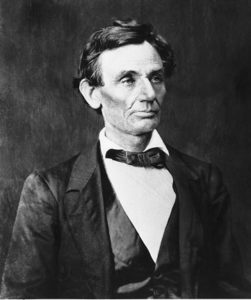 “I am not an accomplished lawyer,” Lincoln wrote in 1850 notes for a law lecture. Continuing in this unpretentious vein, he noted, “I find quite as much material for a lecture in those points wherein I have failed, as in those wherein I have been moderately successful.”
“I am not an accomplished lawyer,” Lincoln wrote in 1850 notes for a law lecture. Continuing in this unpretentious vein, he noted, “I find quite as much material for a lecture in those points wherein I have failed, as in those wherein I have been moderately successful.” Abraham Lincoln won reelection in 1864. Or so we remember. But the results may not be what they seem, and some of the states had questionable legitimacy. I’ll be discussing this topic in a new presentation scheduled for Tuesday, October 29, 2024.
Abraham Lincoln won reelection in 1864. Or so we remember. But the results may not be what they seem, and some of the states had questionable legitimacy. I’ll be discussing this topic in a new presentation scheduled for Tuesday, October 29, 2024.
